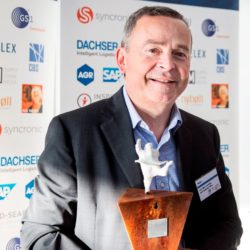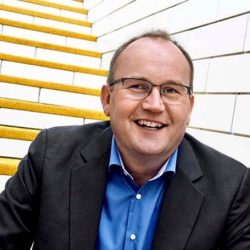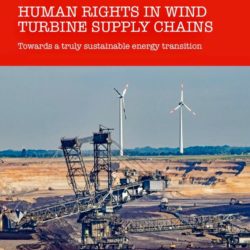Jean Marc Lechêne, Vestas: ”One unique challenge: changing people’s mind-set”
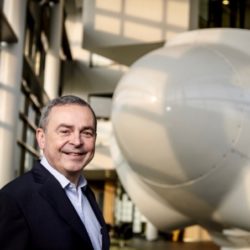
Love them or hate them, wind turbines have become part of the modern landscape. As global demand for renewable energy increases as it becomes cheaper and more efficient, wind systems providers such as Vestas are striving to keep up with the relentless growth and fast pace of new product introduction. “It’s an industry that naturally and constantly pushes you out of your comfort zone,” says Jean Marc Lechêne, Chief Operating Officer, for the world’s largest supplier of wind energy systems. Besides technological leadership, what has kept Vestas one step ahead of competition in the past seven years is its cross functional three-phase transformation program called “Accelerate Earnings”, that culminates in end-to-end, full value chain optimisation. “We’ve changed from silo mentality to working as a cross-functional team and have developed an open book relationship with many of our strategic suppliers. After all, we’re all on the same boat,” says Lechêne.
Interview conducted by Martijn Lofvers and Oskar Verkamman, written by Helen Armstrong
If you’ve ever been up close to a wind turbine or seen part of a tower or blade on the back of an oversized lorry you know the enormity of such constructions. Towers of up to 170 meters and blades of more than 75 metres take a feat of engineering and precision organisation to set up. But Vestas, the world’s leading supplier of wind energy systems, does not shy at a challenge. It has a history of unforeseen setbacks and has always bounced back with grit and its “Will to Win” culture.
The Danish company’s roots go back to the late 19th century when it began as a blacksmith. It later went into milk coolers, hydraulic cranes and in 1970s secretly began experimenting with wind energy. A flaw in its first commercial version led to it designing a more robust model with the priority on safety and quality, attributes that are still at the foundation of the strong company culture. By the mid 1990s it had developed a turbine that could supply the grid with an even electrical output and it delivered its first off shore wind farm.
Today, Vestas employs nearly 25,000 people and has installed over 67,000 windturbines in 80 countries, representing a installed capacity of more than 100 GW. This year annual turnover will exceed 10 billion Euro. As the global appetite for renewable energy accelerates, Vestas anticipates that by 2020 10% of global electrical consumption might be supplied by wind energy. Jean Marc Lechêne, Executive Vice President & COO, Vestas, describes how he is helping to deliver this growth.
What is your responsibility?
“I am responsible for Global Procurement, Manufacturing, Safety, Quality and Environment. It comprises over 14,000 employees in 22 factories over 5 continents and EUR 8bn of spend. We also have eight additional factories that we sub-contract, for both blades and nacelle assembly.
It is noteworthy that Supply Chain Planning is a separate function and sits between Sales and Manufacturing, so the Head of Planning is on the Sales Management Committee as well as the Manufacturing Management Committee in order to ensure full alignment. Also, Sales is in charge of Construction in order to ensure the most effective dynamic optimization with customers.”
How have things transformed since you joined in 2012?
“When I arrived seven years ago we launched the program “Accelerate Earnings”, the aim of which was to reduce the cost of purchase by 15% in two years (2013-14). Vestas was not very lean at that moment and purchasing was scattered. So, the name of the game was to optimize commercial terms: we consolidated purchases, reduced the number of suppliers while implementing A, B, C segmentation. We also ensured we were fully prepared for negotiations with respect to estimated cost, cost of inputs, margins etc. By discussing mostly prices with our suppliers, we achieved our target.
Then, we launched the second phase of the program, “Accelerate Earnings Pro”, which was a three-year, cross-functional program. The name of the game was to reduce the cost of wind turbines components by reducing waste in the supply chain in conjunction with suppliers. So we started to work with categories centred around components, gathering people from Technology, Manufacturing, Procurement and Quality. This approach enabled us to reduce the cost of components and achieved significant savings at a similar pace to the first phase.
We are now in the third phase of the program, “Accelerate Earnings 3”, which runs until 2020. It’s end-to-end, full value chain optimisation, from design right through to service. It starts with the fact that the cost of the wind turbine components (on which we had focussed on the first two phases of AE) is only 50% of the full cost of a wind energy system project, the rest being transportation, construction, infrastructure and service. So, we realized there was still significant untapped potential for cost reduction in these areas. But achieving that potential required that we stepped up the cross-functional work at the next level. In essence, the designers need to know the requirements of each activity across the value chain, among which cost structure and drivers, in order to find the sweet spot between achieving performance and full cost optimization. It is essentially an organizational and executional challenge.” … … …
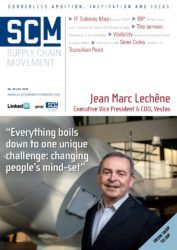 Want to read more?
Want to read more?
Subscribe to the digital subscription to read the full version >>
or
select one of our annual or digital subscriptions to receive the next issue >>
This article was first published in Supply Chain Movement 33 | Q2 – 2019



